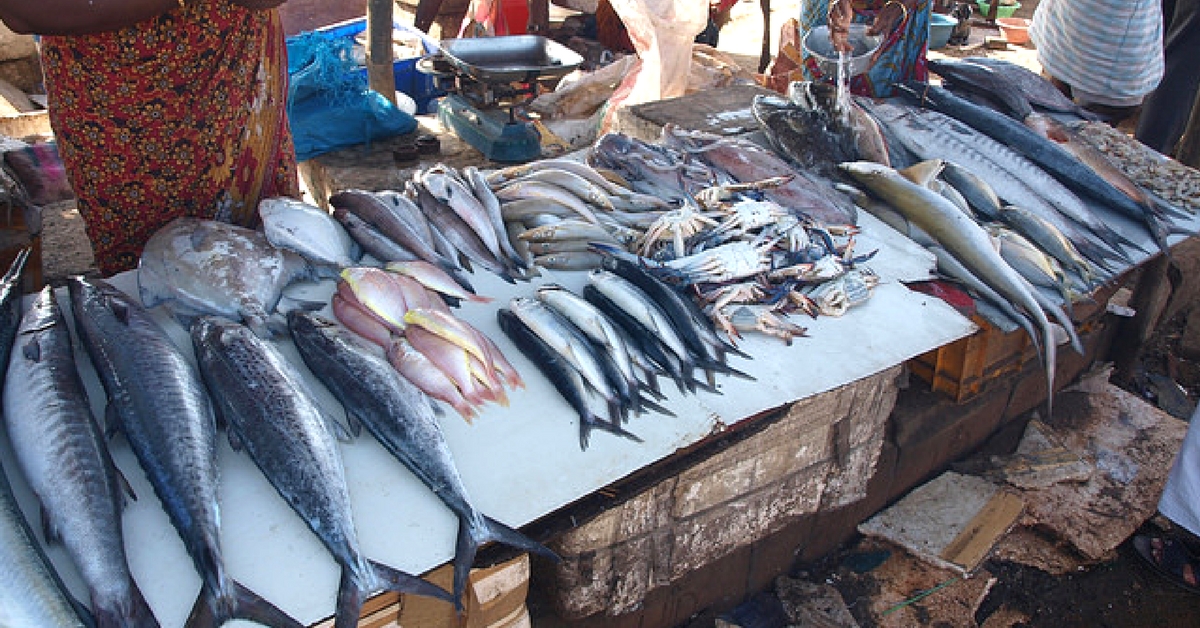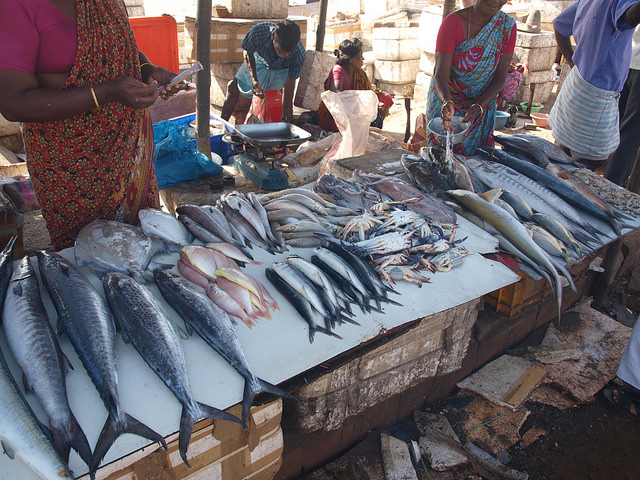Want to Keep Indian Seas Safe? Change the Way You Eat Fish
If Indians change their seafood consumption, it could eventually change India’s fishing practices and counteract fishing out of season.

India is the seventh largest seafood producing nation. According to the United Nations Food and Agriculture Organisation, 3.4 million metric tons of marine animals were caught in 2014. But it’s been predicted that the overall fish catches in India are likely to reduce, due to regulations to prohibit seasonal fishing in critical coastal spawning grounds and nurseries reports Mongabay.
“The market is such that fishermen are compelled to break the regulations to meet demand,” Mayuresh Gangal, a marine biologist with India’s Nature Conservation Foundation in Mysuru told the publication.
So how does one solve this problem? According to Mayuresh and two of his colleagues, the answer lies in the eating habits of Indian consumers. Their team launched an awareness campaign this year called Know Your Fish.
The campaign wants to promote responsible fish consumption in India’s west coast. They do this through a monthly calendar, which suggests species of fish you should avoid in a particular month, according to their spawning and breeding cycles.
Mayuresh and his team believe that if Indians change their seafood consumption, it could eventually change India’s fishing practices and counteract fishing out of season.

They have identified 25 species of commonly caught fish and prawn, and studied their life cycles. They then put together a website, created a calendar and distributed it to schools, colleges and various social organisations.
Their recommendations are based on two rationales – first, sparing the fish during their breeding season and early stages of lives. They elaborate this by using the example of Kingfish. They mention on their website:
“To know when the Kingfish breeds we collated all the available scientific literature on kingfish breeding on the west coast of India. Most reports indicate that kingfish breed during May to November and most of the breeding occurs between October and November. So we recommend that October and November are not a good time to eat Kingfish.”
The second rationale includes collateral damage control. They say that most shark species on the Indian west coast have a breeding period covering March, April and May.
This would mean that eating Seer fish – caught by methods like large gill nets and hook-and-line – during these three months will risk sharks as unintentional by-catch. This could drive them to extinction soon.
Hence, the researchers modified their recommendation for Seer fish to accommodate the breeding season for sharks. This will cause minimum collateral damage.
The team reviews their recommendations each year, and if needed, modify them.
They have also created a free text messaging service to let subscribers know what species to avoid and during which month. They have also partnered with a few restaurants, who have agreed to alter their menus. In the future, they want to partner with 50-60 more restaurants.
The fish names of the website are in English as well as Marathi. Later, they will also add two more local languages.
You can check the calendar here.
Like this story? Or have something to share?
Write to us: [email protected]
Connect with us on Facebook and Twitter.
NEW: Click here to get positive news on WhatsApp!
If you found our stories insightful, informative, or even just enjoyable, we invite you to consider making a voluntary payment to support the work we do at The Better India. Your contribution helps us continue producing quality content that educates, inspires, and drives positive change.
Choose one of the payment options below for your contribution-
By paying for the stories you value, you directly contribute to sustaining our efforts focused on making a difference in the world. Together, let's ensure that impactful stories continue to be told and shared, enriching lives and communities alike.
Thank you for your support. Here are some frequently asked questions you might find helpful to know why you are contributing?


This story made me
-
97
-
121
-
89
-
167














